Margaret Duncan’s diary: What happened next…
Posted on by Fay Curtis.
by Nicky Sugar, archivist at Bristol Archives
In February 1918 Margaret Duncan, a Post Office clerk from Scotland, sailed to East Africa for a new job and new adventures. Her diary and photograph albums are now in the British Empire and Commonwealth Collection at Bristol Archives (ref: 2001/090/2).
After a year of publishing extracts from Margaret’s diary on this blog, we left her with her last entry in February 1919. Archivist Nicky Sugar now takes over Margaret’s story and shares some of the challenges of publishing old documents for a modern audience.
Margaret’s last diary entry in February 1919 covered a summary of the previous three months, and it is clear that by then the novelty was becoming a chore. Compared with the long days on board ship a year before, her busy life in Entebbe left her little time for recording her thoughts. However the photograph albums continue, documenting Margaret’s work, family and social life in 12 volumes which cover the following two decades.
On her voyage out to Africa, Margaret had written with amusement in her diary how one of her new Australian friends had told her fortune: “I’m to be happy and to realise my ambition, but will never be wealthy. To be married 3 or 4 years hence – etc.”
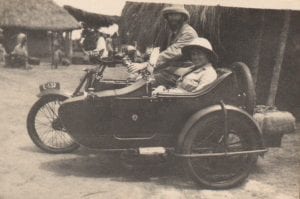 Coincidentally or not, depending on your perspective, in 1921 she married a land surveyor, James Trotter, and their only son Charles was born around 18 months later. For the following few years the family’s life was a kind of permanent safari, as they travelled around Uganda in the course of James’s work.In 1931 he was posted to Nigeria for two years as Assistant Surveyor-General and the photos come to an end when they returned to the UK after a tour of the Caribbean in 1935. Margaret certainly looks happy, and also realised her ambition in seeing a large number of the “beautiful scenes this wonderful world holds” as she’d wished back in 1918.
Coincidentally or not, depending on your perspective, in 1921 she married a land surveyor, James Trotter, and their only son Charles was born around 18 months later. For the following few years the family’s life was a kind of permanent safari, as they travelled around Uganda in the course of James’s work.In 1931 he was posted to Nigeria for two years as Assistant Surveyor-General and the photos come to an end when they returned to the UK after a tour of the Caribbean in 1935. Margaret certainly looks happy, and also realised her ambition in seeing a large number of the “beautiful scenes this wonderful world holds” as she’d wished back in 1918.
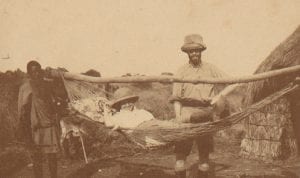
The later photos and their captions continue to capture Margaret’s fun-loving and sociable nature. They also show the relative freedom she seemed to enjoy as a young wife and mother in the colonies compared with the UK. The BEC collection contains many other albums compiled by the wives of colonial officers, but few if any give the viewer such a strong impression that they have got to know the photographer as an individual. Her trademark positivity and determination to “accept all discomforts as part of the great experience” seems to radiate from every page.
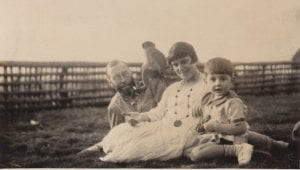
Although it has been great fun getting to know Margaret, there have been some challenges in allowing her voice to speak to a 21st century audience. Until the point where she left Scotland for East Africa her life would have been very sheltered, and some of the language she uses to describe the people and places she encounters is not acceptable by modern standards. The decision was taken to edit out the worst examples, not to censor the diaries but because we wanted them to be easily readable online without the need for too much extra explanation. They are however available in full in our public searchroom.
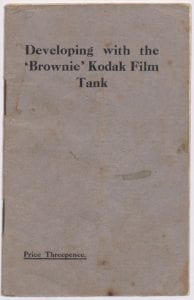
Another aspect I struggled with is how easy it was to get swept up in the humour of Margaret’s descriptions of colonial life. Episodes which seem like caricatures by today’s standards, such as her outrage at having her pith helmet stolen, can actually make the reader laugh out loud. There were also her clichéd assertions such as “Africa becomes a goldmine of treasures to the man who has played the game.”
At first glance this sounds almost laughably like a quote from the “Boys Own Paper,” but in fact it’s actually quite horrific to consider the exploitation carried out by thousands of people who colonised the continent with exactly that attitude.
Margaret’s albums came to us along with a shoe box which contained her diary, many hundreds of negatives, and the instructions for an early home developing kit. As I read through the diary and noticed the number of references to borrowing cameras or learning to colour photographs the pieces of the jigsaw – the huge quantity of images, the vivacious captions – fell into place. Photography for Margaret was not just a pastime but a vocation.
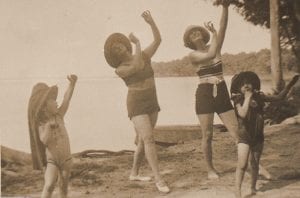
Charles Trotter grew up to become a celebrated professional photographer in 1950s Kenya. If she had been born a generation later, maybe Margaret would have been the one to enjoy a successful photographic career. Instead, her talent and passion were passed on to her son. It seems fitting that the Trotter collection, one of the highlights of the BEC archives, contains both of their work, now catalogued, partly digitised and available for research.
Picture references
- Margaret with new husband James, c. 1922
- Margaret and James on safari, c. 1922
- The Trotter family with Marmaduke, their pet monkey, August 1926
- Margaret’s instructions for her home developing kit
- Margaret and family friends dancing on the beach at Nabagabo, Uganda, 1930